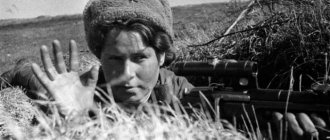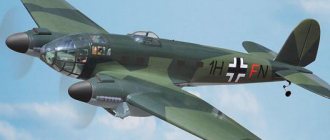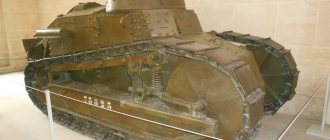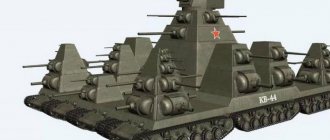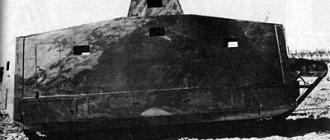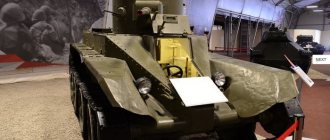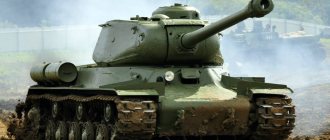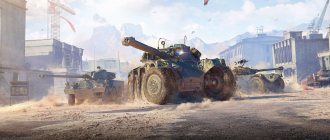Soviet
In total, there are about 60 different armored vehicles, including those received under Lend-Lease and with the exception of experimental ones or those not in mass production.
The most outstanding are the following Soviet tanks of the Great Patriotic War.
T-50
A light tank released to replace the outdated T-26. During development, the designers were inspired by the German PzKpfw III, which has excellent mobility and reliability for its class.
A total of 77 units were produced, and the car itself was considered successful. The appearance of the T-34 made the T-50 practically unnecessary, which is where the history of this combat vehicle ended.
T-28
This medium three-turreted tank is often not given due attention, however, it was superior in performance characteristics to most Wehrmacht tanks in the initial period of the war.
Good armor and firepower were often not used due to inexperienced crews and worn-out equipment. Reliability and service life were extremely low, and the multi-tower design had already become obsolete.
The Red Army used the T-28 until 1944, and Finland until 1951.
T-34
Medium T-34, known throughout the world and which has become one of the symbols of victory. The most massive, superior in characteristics to the enemy at the time of its appearance. Simple and cheap.
Later, the Germans acquired the Pz.Kpfw.VI Tiger, Pz.Kpfw. Tiger Ausf. B and PzKpfw V Panther, which had better armor protection and firepower, but their reliability, mass production and cost left much to be desired.
The T-34 and its modifications T-34-57, T-34-85 remained the most popular until the end of the war, despite the emergence of more advanced equipment.
KV-1
The heavy KV-1 seemed like a real monster to the German army at the beginning of hostilities.
Reliable armor, granting the vehicle virtually invulnerability, but extremely low reliability and poor maneuverability made the KV-1 extremely controversial.
The appearance of the Pz.Kpfw.VI Tiger, which had no difficulty in penetrating the armor of Soviet vehicles, immediately put an end to the KV-1, which had lost its only advantage.
IS-2
The heavy Soviet IS-2, the successor to the IS-1, was created as a counterweight to the German Pz.Kpfw.VI Tiger.
Opinions often differ on the assessment of this machine, but no one questions its effectiveness. The 122 mm cannon and sloped armor made the IS-2 an excellent assault tank, capable of performing any tasks on the battlefield.
In terms of individual characteristics, “Joseph Stalin” was inferior to its German competitors, but in total it was superior.
A tangible advantage was its reliability, which allowed it to travel about 1000 kilometers without breakdowns.
IS-3
This heavy tank was late to the war and was only able to take part in the Victory Parade in Berlin, where it made a huge impression on Western observers.
The IS-3 has the most powerful armor, made in the form of a “pike nose”, a 122 mm gun capable of breaking through the armor of a Pz.Kpfw.VI Tiger from a kilometer, but it has shortcomings that extend back to the IS-1.
SU-152
The heavy self-propelled gun is nevertheless essential on this list. It first appeared on the Kursk Bulge, where it was used as a tank destroyer.
She received the nickname “St. John’s Wort” because she was credited with the mass extermination of German equipment with animal names.
In fact, Soviet soldiers often mistook shielded medium PzKpfw IVs for heavy Tigers, and Ferdinand was the name given to any enemy self-propelled gun.
In any case, the SU-152 "St. John's Wort" played an important role in ridding the Red Army of tiger fear.
M4 Sherman
Finally, let's remember the American average Sherman. Second in number after the T-34, it was actively supplied to the USSR under the Lend-Lease program.
Very tall, quite vulnerable and a fire hazard. On the other hand, there are good surveillance devices, maximum manufacturability and room for modernization.
The Sherman did not become a revolutionary vehicle, but it was produced in huge quantities and modified based on experience in use.
Tank IS-2 (“Joseph Stalin”)
The Joseph Stalin-2 combat vehicle became a worthy response to the Tiger from the Soviet military industry. It was published in 1943. It became the most powerful and most armored of the USSR wartime combat vehicles and one of the best in the world at that time. Engineers from the Soviet Union achieved an economical design.
The mass of the combat vehicle was comparable to the weight of the Panther, while the tank was much better protected by armor. The thickness of the armor reached millimeters. The gun was incredibly powerful in terms of firepower, its caliber reached 122 millimeters. Its shells shot right through Wehrmacht vehicles, pierced brickwork and demolished entire houses. The armament was supplemented by a 12.7 mm DShK machine gun located on the turret. Machine gun bullets did not allow the enemy to rest even behind the thick walls of buildings.
Therefore, IS-2s played an important role in the battles of 1944-1945, and were especially distinguished during assault operations, for example, in large cities. The tactical actions were as follows. In the city, assault groups of 1-2 vehicles operated along with companies consisting of machine gunners, a sniper, and sometimes a flamethrower. The tanks simply swept away the fascist resistance and, together with the soldiers sitting on them, broke through the streets into squares, squares, and parks. Here there was an opportunity to arrange a perimeter defense.
The disadvantages of the IS-2 included the too dense placement of fuel tanks in the control room. If an enemy shell penetrated the armor, the team most often died. The greatest risk fell on the driver - he did not have his own hatch, so he did not have time to get out of the car.
In addition, many unreliable samples that were not properly tested were sent to the active troops in a hurry. The problem was solved only with the modernization of the model, which was completed by 1945. The tank that liberated the peoples of Europe from fascism became a symbol of Victory. The Soviet army used it for almost 50 years.
German
Inspired by the success of Blitzkrieg, German tankers tried to continue its strategy in the Great Patriotic War, but were faced with serious equipment, a huge army and stubborn resistance. The culmination was the battle of Prokhorovka, called the turning point of the war.
However, we must pay tribute to the designers from Germany and list some German tanks of the Great Patriotic War.
Pz.Kpfw III
The medium Pz.Kpfw III combines good mobility, reliability, crew comfort and modernization potential.
The Pz.Kpfw III was produced until 1943, as modernization reached its limit and the vehicle could not compete with heavier models like the T-34, equipped with better sloped armor and powerful weapons.
Pz.Kpfw IV
The medium Pz.Kpfw IV has become a real workhorse. It was created as an assault tank capable of suppressing enemy firing points.
During the war, the Pz.Kpfw IV was constantly modernized, receiving screen armor and a long-barreled 75 mm cannon. Due to the increase in mass, the latest modifications had mediocre cross-country ability.
After the end of the war, it was in service with some countries for a long time.
PzKpfw V "Panther"
A medium tank, considered heavy by the USSR and its allies.
The Panther became an extremely controversial car, as it had both bright advantages and serious disadvantages.
Good frontal armor, located at an angle, a powerful and incredibly accurate gun, good vertical aiming angles, comfortable working conditions for the crew.
At the same time, the thin side armor precluded the vehicle from being used in an offensive, the 75 mm cannon caliber made firing high explosives ineffective, and the high cost and complexity of the design made production difficult.
PzKpfw VI Ausf. H1 "Tiger"
Heavy PzKpfw VI Ausf. H1 "Tiger" inspired fear with its very appearance. During its creation, they gave priority to protection and firepower, sacrificing maneuverability, cost and reliability.
With its appearance, it made Soviet KVs unnecessary and could easily hit any equipment from afar with its 88 mm cannon, until the IS-2 appeared. However, even against this formidable new product, the Tiger did not look like a whipping boy and could compete.
PzKpfw VI Ausf. B "Tiger II"
The last serial heavy tank of the Wehrmacht, characterized by very powerful frontal armor at the expense of mobility and reliability.
In a theoretical head-on duel, Tiger 2 was superior to any opponent due to its armor and 88 mm cannon, but in practice such clashes were rare.
The vehicle, weighing almost 70 tons, was unable to operate effectively in front-line conditions, and its reliability was very mediocre.
Panzerkampfwagen VIII "Maus"
The super-heavy experimental Panzerkampfwagen VIII “Maus” did not have time to fight, but managed to impress Soviet and Western designers. 189 tons of mass, 128 mm gun, electric transmission - all this is the Mouse, developed under the leadership of Ferdinand Porsche.
2 prototypes were created, blown up by the Germans so that the developments would not fall to the enemy. At the moment, one Maus is in Kubinka, where it is still amazing in size.
Jagdpanther
Self-propelled guns, tank destroyer, created on the basis of the Panther. Good dynamics and maneuverability, a powerful 88 mm gun, but poor reliability and poorly protected sides.
Ferdinand
A heavy self-propelled gun that performs the role of a tank destroyer. It caused fear among Soviet soldiers and had virtually invulnerable frontal armor.
Ferdinand was created on the basis of the experimental Tiger (P), which is why it received ambiguous characteristics. Incredibly thick frontal armor up to 200 mm thick, a powerful and accurate 88 mm gun made the self-propelled gun a very dangerous enemy. But in practice, the Ferdinands suffered from low mobility and reliability; the vulnerable chassis made it possible to immobilize these vehicles, and the invulnerable frontal armor did not protect against mine explosions.
Panzerkampfwagen VI Ausf. B Tiger II, "Tiger II"
After the appearance of the IS-2 heavy tank in the Red Army, the Wehrmacht set out to create a competitor to the Soviet “monster”. The Tiger II, also known as the “Royal Tiger,” became such a combat vehicle. He received his baptism of fire during the Allied landing in Normandy; the battalion of new Tigers knocked out 12 Shermans in the first clash.
In fact, the tank became a new modification of the first Tiger. It was equipped with special inclined armor and a large cannon of a larger caliber than before was added. In addition, an improved engine was installed on the tank. Thus, the combat unit was improved on different levels at once.
According to some estimates, it was the improved modification of the Tiger that became the most powerful vehicle of the Second World War; the tank was capable of radically tipping the scales in the other direction. True, it was designed quite late, towards the end of the war. The seriousness of the tank is indicated by the following: Wehrmacht tanker Kurt Knispel won 168 battles on it! Today, a copy of the combat unit can be seen in the Patriot Park museum in the Moscow region.
Results
We did not mention the large number of armored vehicles used during the Great Patriotic War, but we noted the most interesting and outstanding examples.
It is worth highlighting the main features of the most successful tanks of World War II:
- simplicity, manufacturability, low cost of production, thanks to which mass production was achieved;
- good mobility, allowing the machine to be used in any conditions;
- armor of medium thickness at an angle, due to which the mass remained within reasonable limits with a sufficient level of protection;
- a medium-caliber gun capable of hitting targets head-on with sufficient accuracy, while having a high reload speed and a large transportable ammunition load.
The question often arises about whether there is a best tank of the Great Patriotic War. This is difficult to answer without bias, since there have been examples of equipment that could qualify for this title, but suffered due to circumstances such as improper use or production problems.
However, the Soviet T-34 can be called the best in terms of all its characteristics, and this is unlikely to come as a surprise to anyone.
Yes, it suffered due to the low quality of spare parts, the crew’s working conditions could not be called comfortable, the armor did not protect against German guns in the second half of the war, and the gun at times proved powerless against the frontal armor of German heavy armored fighting vehicles.
But the concept of a medium tank, protected by sloped armor, with sufficient mobility and firepower, turned out to be so successful that the Germans made the Panther, trying to embody their vision of the strengths of the T-34.
Later, the mighty Soviet IS-2, IS-3, the German Royal Tiger appeared, the development of the E-series and Maus began, but it was the medium tanks, which became a compromise of all important characteristics, that gained popularity in the Great Patriotic War and after it, eventually evolving in OBT.
Panzerkampfwagen III (PzKpfw III)
The combat vehicle, also known as the T-III, was a tank with a 37 mm caliber gun. It had 30mm armor on each side. The main function is speed (on the highway it gave 40 kilometers per hour). Other advantages of the tank are excellent optics, optimally located seats for the crew, and a radio station. Having all this, the Panzerkampfwagens fought successful battles with heavier vehicles.
However, when the opponents acquired new, more advanced vehicles, the “troika” began to be noticeably inferior to them. As a result, German designers increased the caliber of the tank gun, making it 50 mm. In addition, the tank was covered with hinged screens. In the end, this yielded results; the PzKpfw III fought for many more years. But in 1943, the production of combat vehicles was stopped because experts considered that the tank could no longer be modernized. Over the course of history, 5 thousand T-IIIs were produced in Germany.
Tank Panzerkampfwagen VI Tiger I Ausf E, "Tiger"
The first "Tiger" became a heavy German tank, it was designed at the factories of the Henschel und Sohn company. The baptism of fire took place in 1942, during the siege of Leningrad.
The weight of the vehicle was 56 tons, the armament consisted of an 88-mm gun and two machine guns. The tank was protected by steel sheets 100 millimeters thick. The crew consisted of five people. The combat vehicle could dive 3.5 meters into the water.
It was created as a combat unit to break through enemy positions. He had to eliminate any enemy and put the enemy to flight. Hitler personally ordered the necessary technical equipment for the combat vehicle. Apparently, the Fuhrer's personal control led to the fact that the tank could fire 8 shells per minute, this was a record for large tank guns. The tank is usually described as slow, but on the highway the Maybach engine accelerated it to 45 kilometers per hour.
The German Tiger was one of the most dangerous combat vehicles of the initial stage of World War II. Its design was ahead of its time; it became a model for subsequent combat vehicles of a similar class. In 1942, Allied troops did not even hope to defeat it in direct combat, fearing the 88 mm gun. Enemy units tried to take the Tiger by surprise by unexpectedly approaching from behind.
The disadvantages of the combat vehicle include the complexity of the design, the high cost of production (the creation cost the same as the price of two Panther vehicles). In addition, the Tiger consumed a lot of fuel, and its chassis did not work well in severe frosts.
Each Tiger contained a technical manual with the inscription: “The tank costs 800 thousand Reichsmarks. Keep him safe!". As Goebbels believed, the soldiers should have rejoiced knowing that their combat vehicle was worth seven T-IV units. In fact, the military feared that something might happen inopportunely to the Tiger.

